Before we go into building opinions on correctness, rightness or otherwise on the IIT Fee Hike, let’s get the facts straight. Firstly, credit must be given where it’s due. The Kakodkar report was submitted in April 2011 and until 2016 no decision was taken on the same. Mrs. Smriti Irani deserves credit for biting the bullet on increasing the fees; however, we would also want the other recommendation of the report be taken into stride and implemented.
In this article we delve into the details of the IIT Fee Hike, who is committee (whether IITians or outsiders recommending it), state of finances of the IITs and finally the key recommendation pending for implementation.
SO let’s start the report talking on the IIT fee hike first and look at what the press release says.
On 8th of April 2016, the Ministry of Human Resources Department hiked the fees from Rs. 90,000 to Rs. 2,00,000 per year. The PIB press release stated “The rationale for the SCIC recommendation arises from the fact that the cost of maintenance of the IITs is to be met largely from the student fee. On an average, the Government is spending about Rs 6 lakh per year on each student in the IITs.”
As per the press release, as per the IIT Panel had recommended as hike to Rs. 3,00,000 but the government considered hiking the fees to Rs. 2,00,000 (2.2 times increase vs. Rs. 90,000) with riders protecting as under:

This was later clarified that the IIT Fee Hike shall be applicable for admission from 2016-17 and not applicable for students who have already taken admission.
Now, based on above it is quite clear the Ministry has accepted recommendation from a panel which consists of IIT alumni and who have taken a fact based approach and suggested a hike in fees. To this hike, there are some riders as above where certain students as classified above would not be hit by the hike, which is great for economically backward family students.
We have gone over multiple articles written online either criticizing the hike and some to the extent lambasting the government for this decision. Without sounding Bhakt or anything, lets understand that the UPA government had increased the annual fees from Rs 25,000 to Rs 90,000 (i.e. about a 3.6 times increase) in two steps.
Despite the hike in fees the government has come up with an interest-free collateral-free loan under Vidyalakshmi Scheme for the students, which is actually great. In fact, the great Mamta Didi expressed her discomfort on the hike and our Jr. Yugpurush Junior Sisodia said “There should be a discussion of the stakeholders on IIT fee hike. It is needed to deliberate on whether the fee should be increased. All of a sudden, the fee is hiked which is not good”.
Well, it seems motor-mouthing the biggest trend in India, and yes these are our pretty harsh words, as it feels that they have not read the Kakodkar report which set the ground for IIT Fee Hike.
Now, as we read the above news, we understand that the aim of the hike is to ensure that the regular tuition expenses are met from the IIT Fee Hike and all capex related to the institutions would thus fall into the purview of the government including any scholarships.
So, having said that we dug bit deep into the Kakodkar report (mind you it’s a 278-page document) which takes time to read and find stuff which is well not boring and easy to read. Accordingly, the following section explains:
- Who is this committee
- What was their mandate or terms of reference (important ones)
- What was the time-line of work and how was the same done?
- Whether any stakeholders discussion had happened? (as pointed by Jr. Yugpurush)
- What is the current state of finances of IITs
- What are the sources of funds for the IITs
- And finally, the key recommendations of the committee (implemented and pending)
Committee and its members
So, who are members of the Committee who had recommended this hike:
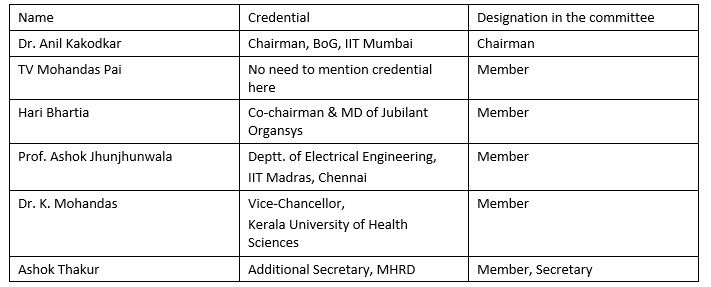
Mandate of Kakodkar Committee report:
- Suggest a roadmap for the autonomy and future of the Indian Institutes of Technology (IITs) as world-class institutions for research and higher learning
- Suggest increase in fees to achieve financial autonomy (in gradual manner)
- Suggest scholarship programs
- Suggest interest free loan scheme
- Suggest means to retain / attract top B. Tech students in IIT system.
And other terms of reference.
Timeline of work by the committee:
Date of constitution of committee 3rd Feb 2010
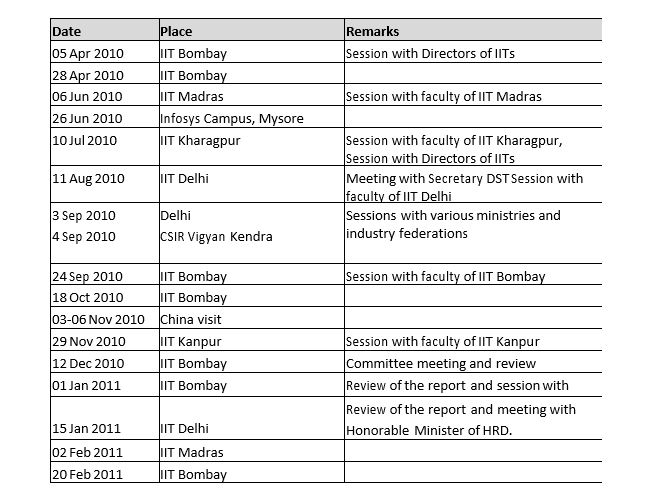
And a reader would as, why am I reading the above, I am here to read above IIT fee hike. Well, the reason is simple, you as a reader need to make an informed fact based opinion on the realities. And give due respect to the body of work that has gone into making a particular political or economic decision as informed citizen. So, now having established that the team which recommended the HIKE are pretty much IITians only, we would further delve into how the background was set for the decision.
The Committee put out an online survey in 2010 which was has 58 questions grouped in 12 categories. This survey was floated to 5170 stakeholders, of which 3755 provided inputs. For details, I would recommend going over the report.
QUICK SNAPSHOT INTO THE FINANCIALS OF THE IITS AND THEIR SOURCE OF FUNDS:
Now, for 2009 and 2010 for the seven established IITs is under:

Who funds IITs and its use of funds?

KEY RECOMMENDATIONS:
Implemented recommendations:
Coming to understanding the IIT fee hike suggested by the committee in context of expenditure:

Pending for implementation:
Important recommendation that need to be implemented as well:
- Current capital grant is about Rs. 60 to 70 cr., per student for established IIT for normal capital expenditure; which needs to be increased sharply.
- The yearly capital grant should be increased to Rs. 1,50,000 per student which will ensure laboratory needs are taken care of.
- Since, existing infrastructure is not in tune with the international institution, the Government needs to spend Rs. 5,00,000 per student (as per 2011 student numbers) over 4 years to rejuvenate infra
- There is an earmarked fund of Rs. 10,00,000 per student, which needs to be hiked to Rs. 15,00,000 per student
- Further, this capital expenditure ear-marking should be increased to Rs. 20,00,000 per additional student to maintain the degree of infrastructure.
- In addition to above there are recommendations for hiring proper CFO, having a financial policy, structuring pension scheme, getting better research grants, strive for more endowments and investment management, among others.
In fact, there is a detailed scholarship program (refer below) also suggested. The committee has being pretty straight stating that all capital expenditure should be met by the Government and there is huge pressure on increasing the Ph D students intake, research papers to be put out. In fact, the following table suggests a dismal performance on Ph D front as under:

Now, having read the above, the intention of the committee, the report, ministry and in fact all our readers is that the IITs should be institutions of excellence not just in India but also globally, wherein we are ranked at 100s. So, well this small step for IIT fee hike should be coupled with increase in spending by the Government and ensure that the Government or IITs not just achieve but surprise positively on the upside on the student and Ph D numbers are suggested in the report in the coming years.
Note:
Scholarship program
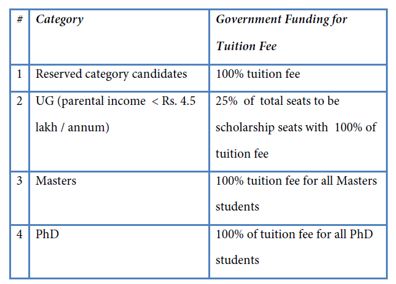
Press release
http://pib.nic.in/newsite/PrintRelease.aspx?relid=138688
Kakodkar Committee report
Some of the articles whether there were some motor mouths and some factually incorrect ones:
http://www.deccanherald.com/content/540316/justified-move.html
http://www.oneindia.com/india/mamata-disagrees-with-fee-hike-2069938.html
http://blogs.economictimes.indiatimes.com/et-editorials/fee-hike-step-in-the-right-direction/
http://indianexpress.com/article/opinion/editorials/taking-a-hike-2/
http://www.thehindu.com/news/cities/chennai/fee-hike-disappoints-students-parents/article8449073.ece



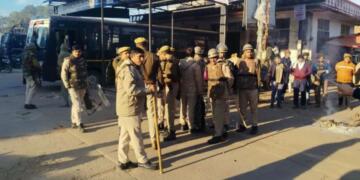





















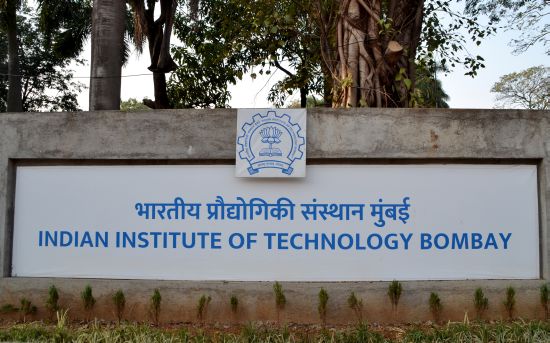





Sarkaar paise bacha kar karegi kya ? Netaon ki jeb bharne se achcha hai IIT pe kharch karna ,desh ka to bhala hoga .
我又来了,您高兴吗?!
Despite all the statistical analysis and financial jargon that you have come up with, one question remains unanswered, on the part of TFI, :
In one article, you call the caste based reservation is so draconian, it has harmed the upper caste so much (actually the TFI article was about the Brahmins, but I took the liberty of extending it to all the general category) that you called the Brahmins “the new Dalits”.. It is fine by me, since I’ve, too, the injustice of reservation.
But, now, when the SC/ST are being given DOUBLE benefits of their caste- reservation based selections as well as full fee waiver, regardless of their economic condition- why are you so eerily silent on it?
Has your stance changed? Or are you, the whole of TFI admin family, so much afraid of speaking out, lest you lose the followers?
Or ae those people right, who claim that you’re just a front of BJP, and criticize it superficially, on trivial matters, and go mum/defend it, on major faults?
I still question the move, that an SC/ST whose family income > 5 L still getting 100% waiver! Why should a GM candidate, whose family income > 1L pay 2L?
I appreciate your efforts. You guys have done a great piece of work. Just amazing. Would have shared it on all my accounts if you guys haven’t used names like Yugupursha. I mean it’s ok to criticise such a*****les but please don’t use such immature language in a logical post.
Dear Sir
I think that there are some things which need to be clarified.
A large part of the funds that IITs get are used in running labs. Most of the UG students are not allowed to access equipments which are really advanced in nature ( generally very expensive many times in crores) and believe me there are many of them. The PGs generally use most of these.They are given fee waivers and also some stipend to do their research. The government is putting most of the load on the UG students. The research that is done needs investment by the government and that should not be funded by increasing the fees of the meritorious students.
The government always shows in their achievements that they have increased the number of IITs and seats in IITs. But what kind of achievement is this if they are unable to run them and have to cut the funds of the existing IITs to create new ones.
There is still need for in depth analysis by the media.
They know that they need the funds. So they have the following options:
1. Get more funds allocated from the government itself -which they can( the government claims to have grown economically) but still they won’t.
2. They can remove the fee waiver for the reserved category. – Hey who would fight with the vote bank of crores when you have other methods.
3. So they come up with one easy solution – let us increase the fee of the general category who otherwise just strive to get into IITs. So the new comers won’t raise their voice much and all things will be settled.
The announcement is made just before exams – what a coincidence.
Apologies for spelling and grammatical errors if any as I am in a hurry because I have my exams you see!
That’s what I’m talking about… The whole article revolves around R&D, which has nothing to deal with UGs. Again.. we never get a chance to use those fancy equipments in Labs. Why should we pay for something which we never use… Seriously!!.
-They were comparing the No. of PhD students with US but never mentioned PhD in US costs around 30k to 40k USD (230k INR on an average).
-Now the major share of the SO CALLED hefty amount spent on UG’s is to pay for Profs. We all know how interested they are in teaching… They spent most of their time on their research. Why the hell should we UGs take all the burden of these researches. Govt should pay for it. And what the hell are they gonna do with all those tax collected if they are not willing to pay for R&D, spent for the extravagance of politicians!!
“Mohandas pai – No need to mention his credentials”. Lol!!!!. Yes, he doesn’t have any.